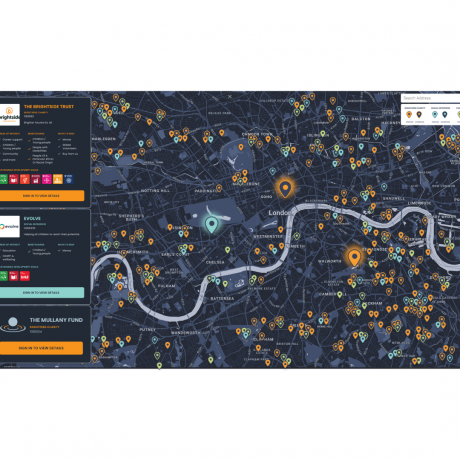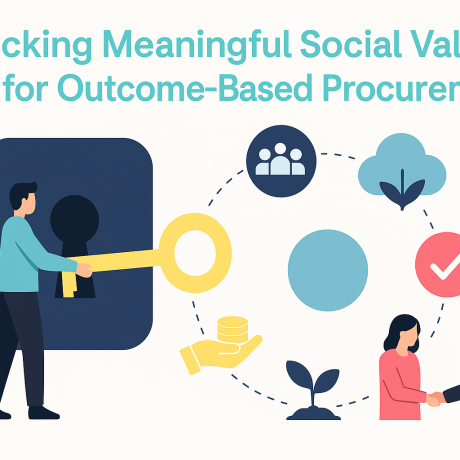In an increasingly digital society, the Voluntary, Community, and Social Enterprise (VCSE) sector must be equipped not just to survive, but to thrive. The landscape of fundraising, service delivery, and stakeholder engagement is shifting rapidly, and without adequate digital infrastructure, many VCSEs risk being left behind.
At whatimpact, the platform behind the National Social Value Marketplace®, we consistently see the impact of outdated assumptions: that small community groups can’t handle tech, that digital transformation is too complex or inappropriate for grassroots organisations. This mindset is not only false, it’s harmful.
Digital Exclusion Is Organisational Poverty
We already know digital poverty at the individual level traps people in cycles of inequality. The same applies to organisations. Without digital access, training, and tools, VCSEs face exclusion from:
- Grant opportunities
- Corporate partnerships
- Stakeholder engagement
- Public visibility and trust
This isn’t just about websites and Wi-Fi—it’s about connectivity, inclusion, and future-proofing. Emerging technologies like AI, digital impact reporting, and data-driven decision-making will only widen the divide if we don’t act now.
The Data: A Growing Digital Divide
Recent studies paint a stark picture:
- 🔻 44% of UK charities lack a digital strategy (Charity Digital, 2023)
- 📉 Those that do have a strategy raise 28% more in donations annually
- 🧩 Only 50% of boards feel confident in their digital literacy
- 💸 60% of charities report financial barriers to tech adoption are increasing
- 📊 65% of nonprofits say digital fundraising is essential—but fewer than 40% feel confident using digital tools (Blackbaud UK)
This divide isn’t due to lack of ability—it’s due to lack of support, training, and access.
Proof in Action: Empowerment Through Technology
whatimpact.com recently distributed over £800,000 in grants to the VCSE sector. The beneficiaries ranged from micro, unregistered community groups to mid-sized charities, each empowered through intuitive platform tools and human-centred support.
Despite limited previous tech experience, successful applicants navigated digital profiles, reporting tools, and partnership applications with confidence. Why? Because they were enabled, not dismissed.
“The whole process has been new to our organisation, and it has been straightforward to complete. The whatimpact staff have been amazingly helpful with the sections we were unsure of.” — Community Group Grant Recipient
“Very supportive team, especially with helping us access the portal and webinars on how to complete reporting.” — Charity Staff Feedback
With an average customer service satisfaction rating of 9/10, it’s clear: access + support = transformation.
The Hidden Cost of Manual Matchmaking
Many local authorities and infrastructure bodies still rely heavily on outdated manual processes for funding, partnership development, and VCSE support. This approach is not only inefficient—it’s costly:
- 💼 Time spent searching for resources manually detracts from mission-critical work
- 📉 Missed opportunities due to lack of visibility and real-time connection
- 🔄 Duplication of effort across sectors and geographies
VCSEs are not “too small” to be digital. They’re often too under-supported to be set up for success.
What Digital Empowerment Looks Like
Platforms like whatimpact offer scalable, intuitive solutions for VCSEs of all sizes to:
✅ Build credible digital profiles ✅ Communicate needs clearly and consistently ✅ Access private sector offers and grant schemes ✅ Report on outcomes and impact effortlessly ✅ Build lasting partnerships with measurable social value
This isn’t about replacing people with platforms. It’s about amplifying human connection through better tools, ensuring that every VCSE has the chance to be seen, supported, and sustainable.
A Sector Built on Collaboration and Tech
To secure the future of the VCSE sector, we must challenge the outdated narrative that digital transformation is a luxury or a burden. Instead, we must treat it as what it truly is: a lifeline.
Here’s what needs to happen:
- 🏛 Public bodies must prioritise funding for digital infrastructure and platform access
- 🧠 Support organisations must shift from gatekeeping to enabling
- 👥 Corporate partners must seek inclusive, tech-enabled partnerships with community groups
- 📚 Training, mentoring, and intuitive design must be standard, not optional
The Call to Action
Let’s stop underestimating the digital potential of the VCSE sector. Let’s stop suggesting they’re “too small” or “not ready.” Instead, let’s:
- Invest in digital training
- Fund access to user-friendly platforms
- Create real pathways to collaboration across sectors
Technology is not a threat. It’s an opportunity. And it’s time we gave every organisation—no matter how small—the power to shape the future they serve





